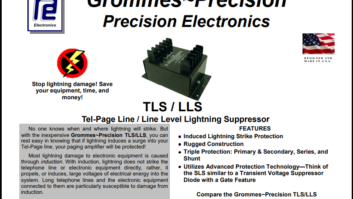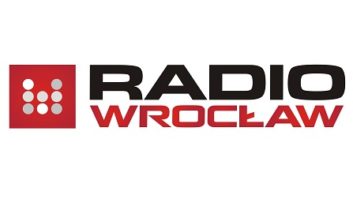Even Non-Technical Managers Should Understand Utility Problems Due to Storms, Facility Design
The phrase “mission critical” usually describes enterprises or facilities on which people’s lives depend – air traffic control, air defenses, hospitals, financial systems.
When disaster or bad weather strikes, radio can become mission-critical. People’s lives can depend on broadcast information.
Within a broadcast plant, certain systems always are critical to the station mission of delivering programming and commercials. Studios and transmitter sites need reliable power.
Ideally, managers and engineers would play out the possible scenarios for disruption of power and devise workable strategies to deal with the effects of such scenarios before they happen. Otherwise, when power problems destroy data and equipment has to be repaired, replaced, reconstructed or recovered, station operations and revenue may take a hit.
In the case of a disaster or bad weather, power problems become a public safety issue. It’s in a station’s interest to educate its managers in basics of power protection.
Six degrees of disruption
There are several ways power to a facility can be disrupted, including blackouts, brownouts, sags, spikes, surges and noise. Lightning also is a major disrupter. Even if it doesn’t deliver a direct hit, it can cause disruptions.
A blackout is a complete loss of power and voltage. This can happen when, for instance, a power grid transmission line is cut, and the power from the power grid to the facility goes to zero.
A brownout is a drop in power and voltage. This can happen when demand for electricity puts such a load on the power grid system that the amperage and voltage available are not up to the usual standards.
“Sag,” “spike” and “surge” describe power and voltage problems that happen because of electrical storms and power demands from the outside power grid and other internal electrical equipment.
The best example is what happens when you plug an electric drill into a power strip into which a shop light is connected. When you start the drill, the shop light flickers because the voltage from the power strip tries to meet the increased demand from the drill motor, which takes power to get it started. This is a sag.
When the motor overcomes the inertia of a full stop and runs at full power, it does not need as much power, or voltage, to keep it running. The power strip still provides high power for a short time, which is not needed. This is a spike.
Using the power strip analogy, a “surge” can happen if more voltage than is required comes through the strip. If the surge or spike power, or voltage, is too high for too long, the overvoltage could fry the filament in the light bulb and it would fail.
Consider what could happen to equipment connected to a system that includes lots of motors, like the electrical motors that run elevators, furnace and air conditioning systems, electric lights and electric welding machines, etc. Remember: “Not if, but when.”
Electrical “noise” is electromagnetic interference caused by electrical storms, and noisy electrical equipment such as motors or welding equipment, fluorescent lighting and even radio transmitters. This noise can make your computer lock up, crash, go off-line, transmit bad data or become corrupted.
Most radio broadcast equipment devices now contains microprocessors that can be negatively affected by power disruption and noise. It is prudent to protect that equipment and the revenue – or lifesaving information – it can provide.
Internal affairs
Power problems aren’t limited to utility disruption, according to Gordon Brownlow, regional sales manager for transient voltage surge suppression devices for Control Concepts at Liebert Corp., a subsidiary of Emerson Network Power.
“Twenty percent of the power problems we see are utility problems, like blackouts and brownouts,” he said. “The other 80 percent come from the customer’s facility, because of inductive loads and switching.”
Dr. James T. Kennedy, a member of Lucent Technologies’ consulting staff, said the internal problems “are one of the two major problems we deal with.”
Buildings built before 1980 weren’t wired to accommodate the increase of electricity used by servers and mini switchers. Facilities in those buildings, he said, “have to reengineer from the ground up, and rewire internally to increase that capacity.”
Kennedy says the first step in devising upgrades or protection is to perform an audit of a facility’s existing wiring.
“An electrician will use an infrared device, which measures the heat of the wiring in the wall when all the devices on the circuit are in operation. That will indicate whether devices need to go on their own dedicated circuits. Many devices in service today require their own dedicated circuit,” he said.
Kennedy stressed the importance of a proper ground in any installation.
“A water pipe is not a good ground. A properly installed ground rod (and system) is key.”
Four-point protection
So how can you protect your facility? Brownlow says surge suppression is a good start. Transient voltage surge suppressors, he said, “work by knocking down or ‘clamping’ voltage surges in a matter of milliseconds.”
Think about dumping water into a strainer. The suppressor acts like that strainer and strains out the big shock of the dump of electricity (or surge), but does not fully stop the flow.
A filter, according to Brownlow, “works on the voltage that wasn’t clamped by the surge suppressor.” Using the strainer example, consider what happens the strainer is lined with a dishcloth. Not only is the surge controlled, the flow is controlled to a manageable level. A manageable level of voltage helps microprocessor equipment and other electrical equipment run at optimal performance.
Brownlow suggests a four-point approach to protection for a facility, starting with the service panel, where electric power from the grid comes into your facility; the distribution panel, where the equipment gets its power; and end user equipment, such as what is connected to the distribution panel.
“Don’t forget the communication wires (RJ-45, RJ-11 and coaxial cable inputs and outputs), either, ” he said.
Uninterruptible power supplies can help moderate effects of power problems. Off-line UPS systems work when the line power is interrupted; a battery supplies a limited amount of power. Line-dependent UPS systems with rechargeable batteries are a solution, but Brownlow says they have limitations.
“Those devices kick in when the voltage goes out,” he said. “They are battery operated, and each time the UPS goes on, it makes a charge and discharge cycle. Those cycles will catch up with the battery,” and the battery eventually will fail.
Brownlow says a true or “double conversion” UPS acts like its own utility.
“It breaks the circuit twice and cleans the power. It converts the AC or power grid power to DC, and that DC powers an inverter, which provides AC to the protected device or circuit.
“When the AC (power grid) power is lost, the true UPS automatically switches to the on-board DC batteries, which power the inverter without interruption. The batteries on true UPS units last much longer.”
Kennedy said a true UPS should have sufficient capacity to cover all the devices connected to it, with a percentage in reserve.
In many installations, generators are used to provide backup AC power necessary to power the facilities. They can be gasoline, diesel and propane/natural gas powered units, and can be switched in manually or automatically, when a loss of AC power grid power is detected. They can be connected to true UPS systems for increased reliability.
When the AC power grid power is interrupted to such a system, the batteries will continue to supply the inverter until the generator system comes up to full power. In theory, this provides the greatest reliability, because the generator (assuming it’s been maintained properly), can supply power to the true UPS inverter for months – certainly long enough for AC grid power to be restored without loss of data or broadcast time.
With any enterprise, there is a cost-benefit ratio to any investment, power protection included. The question that must be answered is this: Is the dollar value for replacement of equipment damaged by power problems, and the dollar value of labor spent in remediation of the ancillary problems caused by that damage, less than the cost of power protection?







